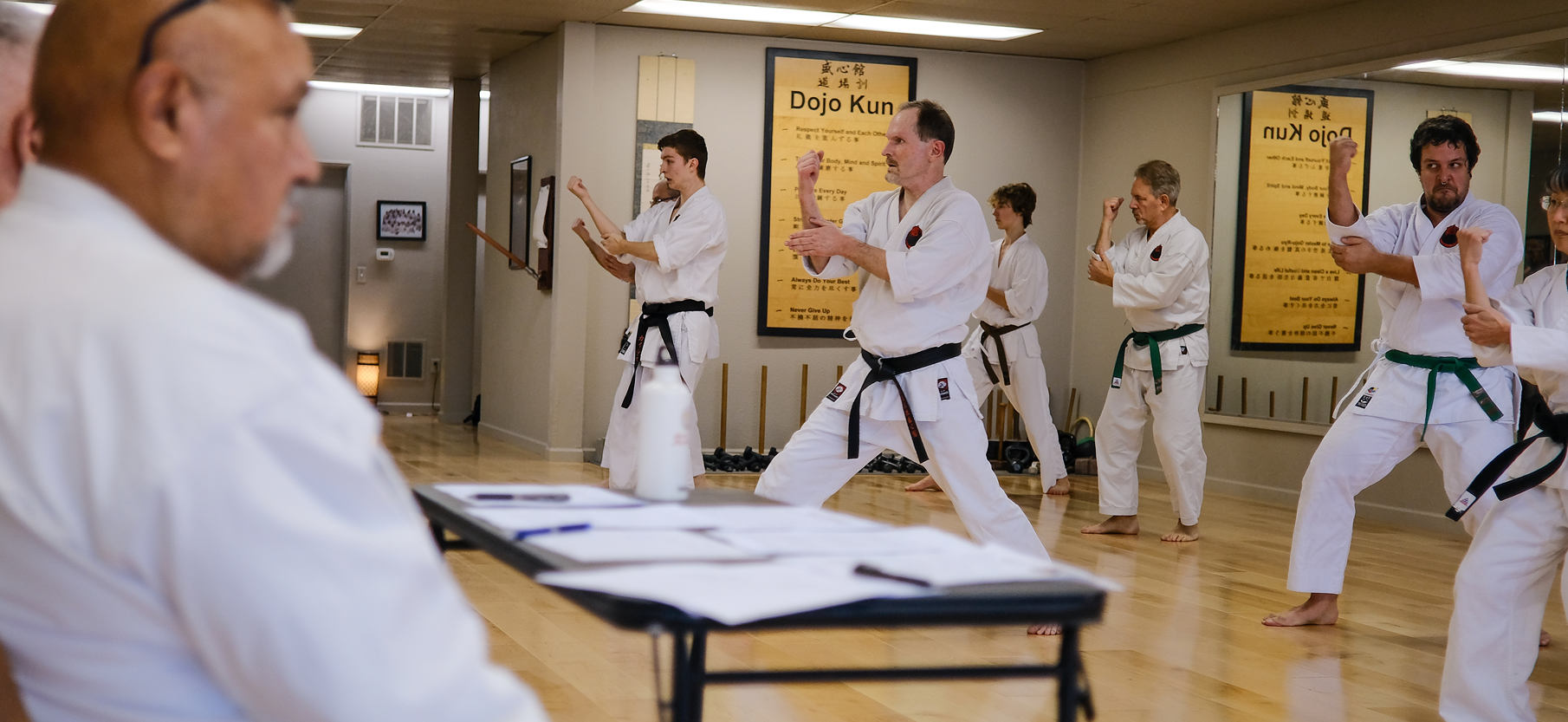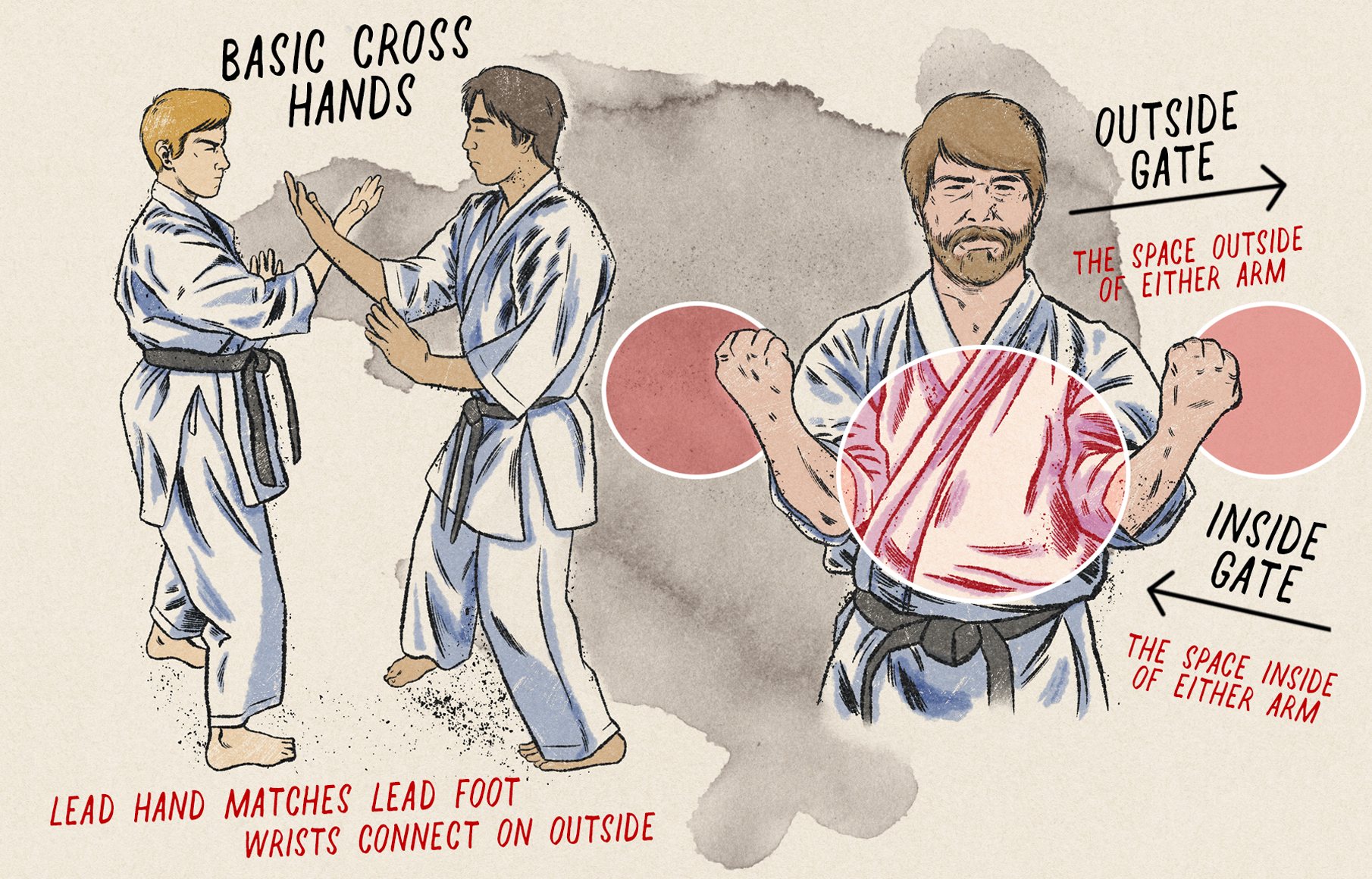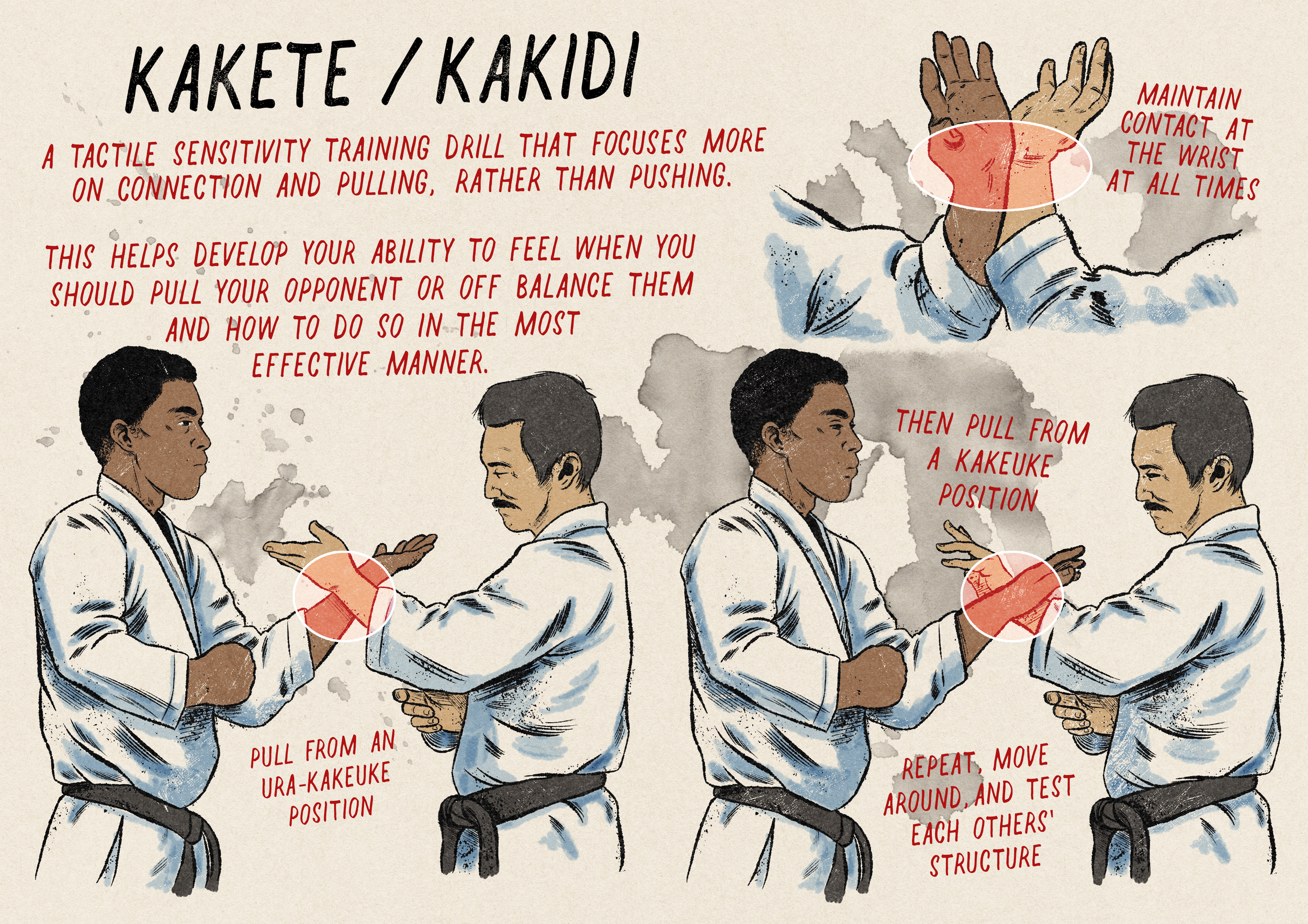
This list includes online training materials recorded at the Dojo for the Seishinkan YouTube channel.

Kakie and Kakete are forms of Push Hands that we practice in Goju Ryu. These are tactile sensitivity training drills that train you to feel your opponent as a means of controlling them. It is important to understand that Push Hands is not an imitation of how a fight will play out, but a snapshot in time of when you make contact, or “bridge,” with an opponent. Consider the connection the point of contact in which you’ll be blocking an opponent’s strike. While it is common to practice in a traditional “cross hands” configuration, with the outside of the wrists connecting and your lead hand matching your lead foot, the application of many techniques can be performed on either adjacent or non-adjacent arms of the opponent. Depending on which arm you use, the techniques will either set you up for an inside gate counter or an outside gate counter.

As you practice, you want to always have a bit of forward energy and intention coming from your lead arm, so that as soon as you feel an opening, you instinctually strike and take advantage of an opportunity right as it arises. As your opponent pushes into you, you should receive the energy but be ready to recoil once their pressure stops, like a spring being compressed and snapping back. The point of counter-resistance should be your wrist, that is where you want to focus your energy and attention, not your fingertips. In the Chinese martial arts, the wrist is considered the “head” of the arm, with the elbow being the “tail.” The head is what drives, as in, it directs the force you exert and receive from your opponent. The humerus / bicep should be used as the base, keeping your elbows tight in towards your core, with your lats engaged for stabilization.
That is up to you and your partner, but there are a few things to keep in mind. First, the point of tactile sensitivity drills is to learn to feel your opponent and based on their movements, understand their intentions. Sensei Morio Higaonna has a phenomenal quote about this in a video interview; he says “I know the mind of my opponent by touching their skin.” And rightfully so, with sufficient Kakie and Kakete training, you can learn to feel your opponent, where their energy is going, and react naturally to it whether you are receiving or striking. You’ll also learn to seek contact so that you can use it against your opponent, rather than running away from it.
If you are applying too much pressure and force you will be working against yourselves. By pushing too hard into your opponent, you further root them into their stance (by pushing them to their back heel), and your goal should be to disrupt their rooting and structure. How? When your opponent pushes into you, you want to make it so you feel empty, like they are pushing nothing, so they can’t connect to your rooting or feel your structure. But when you push back, you want to make sure you can feel their structure, and to achieve this takes countless years of practice. The dedication is worthwhile; if you can control your opponent, you can control the fight.

Kakie is often practiced in a bit of an arching motion, using the upward motion to break and elevate the opponent’s structure, which lifts their center of gravity, making them more susceptible to “kuzushi-waza,” off-balancing techniques. If you press too hard and pin your partner, they can easily break free with lateral movement, no matter how hard you push forward into them. The lesson here is that you overcome strength with softness (redirection of energy). Similarly, you overpower weakness with strength. The two are of equal importance, GO + JU, hard and soft; do not neglect or favor one over the other.
Practicing with too much strength and pressure will also teach your body to naturally gravitate toward a more tense, rigid state. This limits movement. Tactile sensitivity training and muscle memory are not retrained well under tension and stress. We want to train our bodies to be fluid and relaxed so that we can move quick and freely, but to be capable of force, rooting, and tension at a moment’s notice; you know this in your kata and kihon as that moment of “kime.” Rather, it is good to have proper posture and structure and to sink into your rooting, remaining as relaxed as possible until you need to explode with your offense.
That said, you always want to dial up pressure to a reasonable extent in order to emulate the feeling of real striking and receiving. And while adding a lot of pressure can feel like a good conditioning workout for your arms, if you’re wearing them out while practicing Kakie or Kakete, you’re missing out on the purpose of such drills. This type of practice will teach you how to out-structure your opponents, rather than relying on being able to overpower them. This is specifically why drills of this nature work so well with close range fighting systems like Goju Ryu.

Kakie tends to focus more on giving and receiving energy. Kakete helps you understand how to get in control and to decide what to do once you are. Being able to uproot your opponent, manipulate their limbs, and pull them off balance is a very useful skill when it comes to close range fighting. Many joint locks and manipulations can be tested and practiced while you are drilling Kakete with a partner.